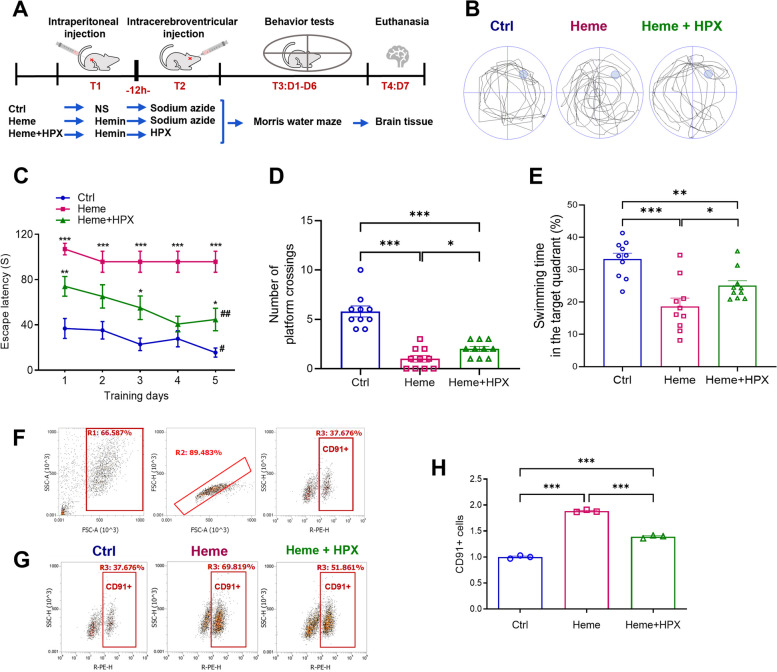Fig. 1.
Hemin induced cognitive impairment and increased CD91 + cells in brain, and HPX alleviated these effects. A Rats and experimental protocol. The rats were randomized into 3 groups: 1) Control group (n = 10); 2) Heme group (n = 10); and 3) Heme + HPX group (n = 10). On the first day (T1), the control group rats received an intraperitoneal injection of NS. The rats in the Heme group and Heme + HPX group received an intraperitoneal injection of hemin. After 12 h (T2), the control group and Heme group rats received an intracerebroventricular injection of sodium azide, and the Heme + HPX group rats received an intracerebroventricular injection of HPX. Behavior tests were conducted over the next 6 days (T3). Euthanasia was performed on day 7 (T4). B Representative swimming paths obtained in the probe trial session of MWM test. C The escape latency in the acquisition session for five consecutive days. Data are presented as means ± SEM. ***p < 0.001, **p < 0.01, *p < 0.05 compared to control group. ##p < 0.01, #p < 0.05 compared to the values on day 1. D The number of platform crossings in the probe trial session. E The swimming time (%) in the target quadrant. F The gating strategy of FCM analysis for CD91 + cells in rat brain. Cells were first gated to remove fragments and particles (R1, R2), and then cells expressing CD91 were gated (R3). G Representative FACS plots and quantification of the percentage of CD91 + cells in the three groups. H Quantification of CD91 + cells among brain cells after normalization. Data are presented as means ± SEM. ***p < 0.001. **p < 0.01. *p < 0.05

